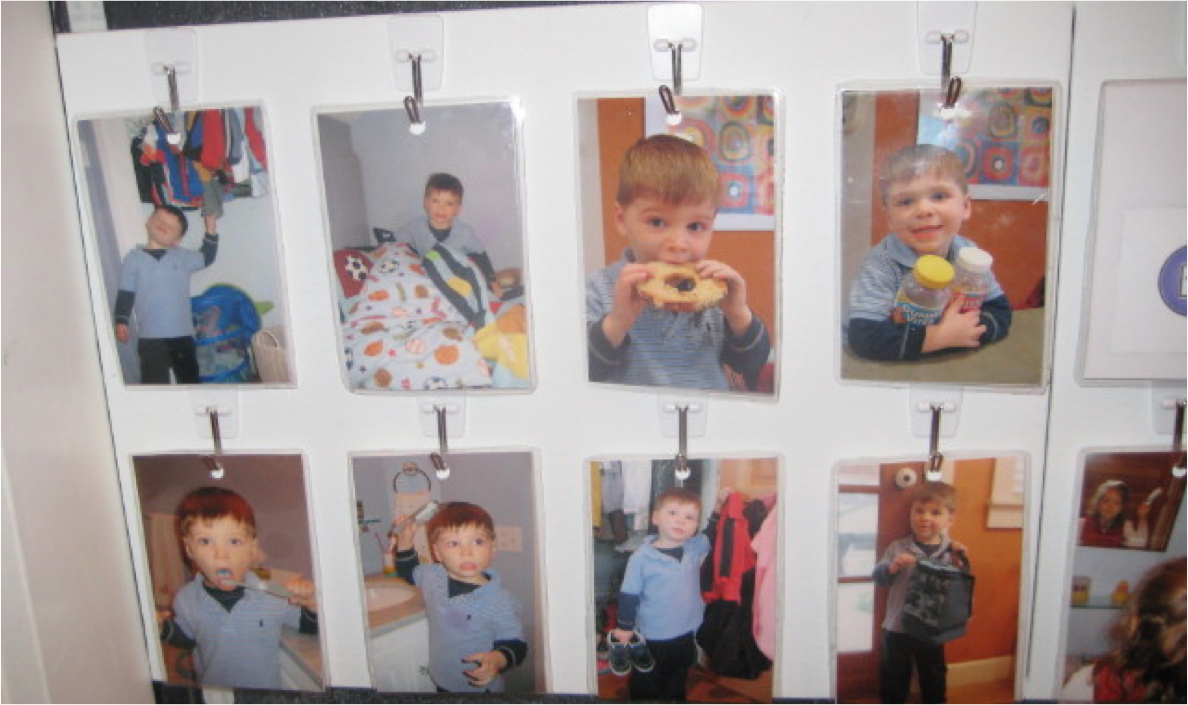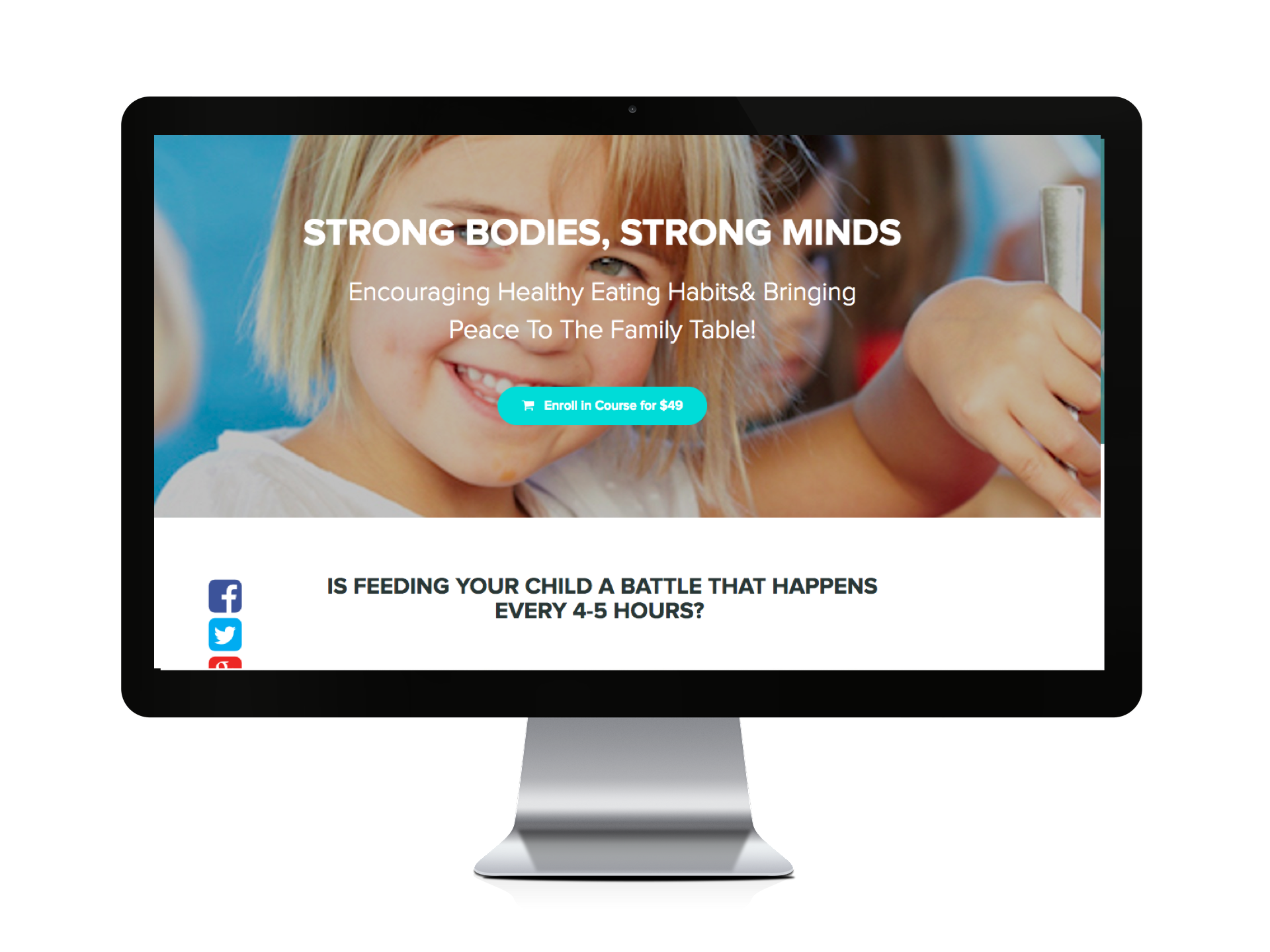Do mornings at your house look like a scene from a stressful Groundhog’s day video? The same level of stress, the same rushing, and the same power struggles with your children day in and day out? If it does, you are not alone! One of the biggest challenges modern families seem to face is getting everyone out the door in the morning. Of course, it is physically easy to accomplish, but the biggest complaint I hear from the families I work with is that it is a constant struggle and can feel combative. So what can you do? Simplify!
Creating A Tool For Routine
In order to simplify, start by boiling the morning down into a handful of tasks (approx. 4-8) that your child needs to accomplish to leave for school. Using a morning routine chart that you and your child create together can make a world of difference. This chart tends to be much more effective when the child is involved in creating it.
Here are a few simple steps to creating a routine chart WITH your child:
1) Purchase materials: solid board and 3m sticky hooks
2) Have your child create a list of ALL the things they need to do in the morning before they leave.
3) Help them scale it back to 4-8 tasks (based on age/ability)
4) Take a picture of your child doing that task / have them draw it (laminate each if you like – they last longer)
5) Assemble the board and place a hole at the top of each picture.
6) Let your child order the tasks. Place it somewhere accessible to your child so they can manage it on their own and it is visible to everyone.
Once you have created and hung your routine chart you’re not done! Now the focus is taking time for training. It is important to walk through the process with your child for at least 1-2 weeks. Once you see that your child is able to manage on their own slowly withdrawn yourself from the process. Good luck and enjoy!!!
WANT MY ROUTINE CHART GUIDE?
Now that you have a chart to work with, your job is to let the chart do the guiding. You don’t need to keep asking, “Did you make your bed?” “Did you brush your teeth?” “Did you get your jacket out of the closet?” Now your job is to simply point to the chart and ask “what’s next on your chart?” There is no need for stickers or treats. Rewarding your child will not encourage them to get involved it will encourage them to want more treats and rewards. The more your child owns the chart and the process, the more success you will see during your morning routines. But, don’t expect magic. You’ll need to take time for training. This is a process and may take a few weeks before your child uses it independently. But it sure feels better than feeling like the taskmaster who needs to manage each morning event.
Preparing Lunches That Actually Get Consumed!
Every child, school, and family has their own preferences around what gets eaten at lunch each day. It can be helpful to have a conversation with your child about what the preferences are for all three so that you can create a list together of all the lunchbox options. This will help to create options for the lunchbox that your child will actually eat and will take the pain and guesswork out when preparing lunch for your child each day.
Start the conversation with what the school’s guidelines are since they generally have restrictions around what cannot be brought to school. Some schools rule out things like nuts and candy. So talking about all the things your child might like that is not allowed will help them to understand and rule them out from the lunch list.
Next, discuss what your family values and considers essential for a lunchtime meal. Start by asking your child what they think is important to be consumed during each meal. You can then broaden and expand on their thoughts. It can be helpful to discuss the why behind your family choices too. An example of this might sounds like this, “In our family, we feel it is important to eat healthy foods (fruits, vegetables & proteins) to keep our body strong, which will allow you to have the strength and energy to play on the playground during recess. And fruits and vegetables also help us to have energy and stay focused when doing work like you do in the classroom during reading and math.” Making the connection between the healthy foods and the activities they enjoy will not only create a greater understanding but also a greater commitment to wanting to eat those healthy foods you packed for them.
Lastly, look at what your child actually enjoys eating. Make a list together or take them to the grocery store and let them point out what they would like to eat in their lunch. If having a vegetable at each meal is something your family values, then one idea might be to take them to the produce department and ask, “What two/three vegetables would you like to see in your lunch this week?” The more they are involved in the choices, the more likely they are to actually eat it in their lunchboxes. The goal of this conversation or shopping trip is that you now have a list to draw from that is acceptable to your child and that makes daily lunch making much less taxing.
Making Sleep Routines A Priority
Who wants to go to bed when there is still fun to be had? Most of us don’t, including our children. But staying up until 10 PM is not going to make for a school-ready child who is prepared to focus and learn at 8:30 AM. So, focusing on sleep routines is essential.
The number of hours of sleep children needs varies, but there are some general guidelines we can follow to make sure they are getting enough rest. Children 3 to 6 years old need between 10 and 12 hours of sleep (If your child naps, those hours are included in this number). Seven- to 12-year-olds need between 10 to 11 hours of sleep. And 12 to 18 old need only 8 to 10 hours, but they tend to stay up later to socialize and do homework so getting to bed at a reasonable hour is critical for your teen!
Any time is a great time to pick up those old bedtime routines we let go of or come up with new ones that work for everyone in the family. Routines keep everyone focused and tend to simplify our daily lives. Research has found that the human brain has evolved to feel calmed by repetitive behavior and that our daily habits and routines are a primary way to manage stress. Why not make this part of the day less stressful for everyone and ensure that everyone is getting the sleep they need to be alert and productive the next day?
Getting kids ready for school and out the door does not have to be a painful process. The more that you involve your child in the process of planning, the greater success you will have in them engaging and using the tools to be more cooperative and involved. Try one or all three tips today and see what happens. This is a process so experiment, be consistent, and most importantly have fun with it!
BEFORE YOU CLICK AWAY, LET ME ASK YOU A FEW QUESTIONS:
- IS FEEDING YOUR CHILD A MAJOR BATTLE THAT HAPPENS EVERY 4-5 HOURS?
- LOOKING FOR SOME HELP GETTING YOUR KIDS TO EAT THEIR VEGETABLES?
- WANT YOUR KIDS TO TRY NEW FOODS WILLINGLY?
- WOULD YOU LIKE TO BE ABLE TO SIT DOWN AS A FAMILY FOR DINNER?
If you answered YES to any of these questions you may want to take it one step further and check out the STRONG BODIES, STRONG MINDS online course:







